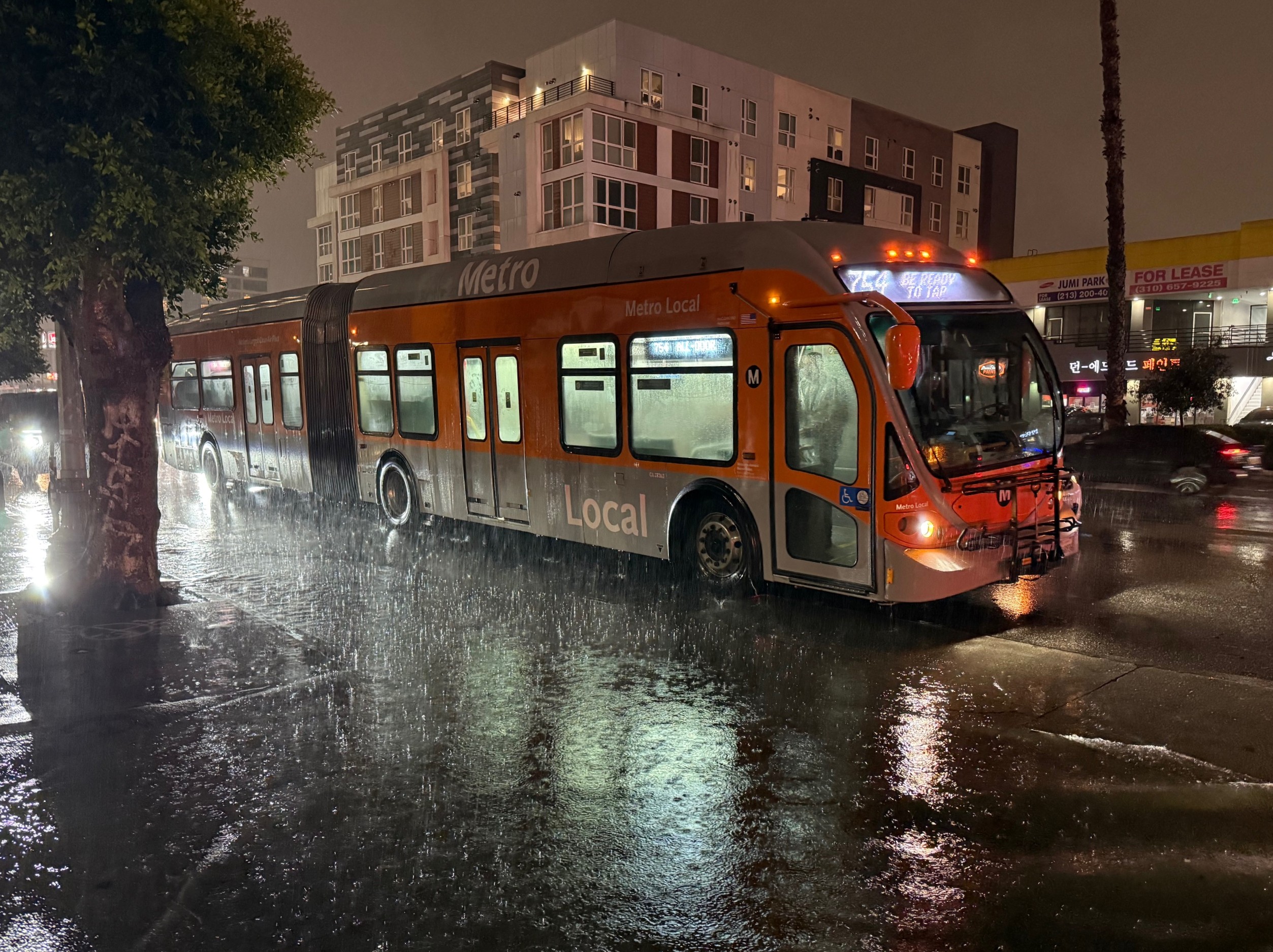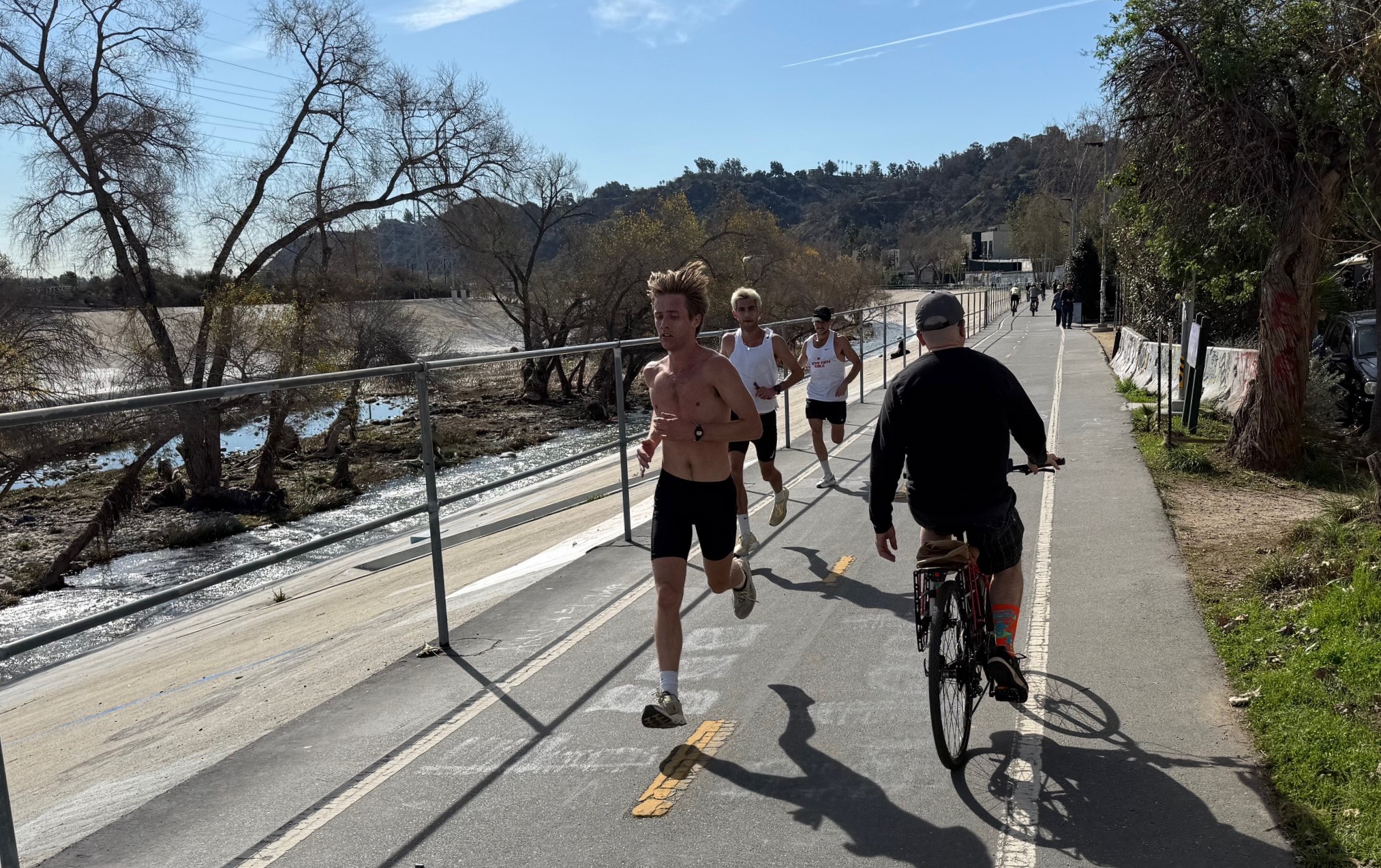 A map of the areas served by transport MPOs, pictured in color. (Photo: NARC via Kaid Benfield)
A map of the areas served by transport MPOs, pictured in color. (Photo: NARC via Kaid Benfield)In a new op-ed
for Citiwire, former Indianapolis mayor and GOP member of Congress Bill
Hudnut suggests six ways that Washington can train the nation's
350-plus metropolitan planning organizations (MPOs) into tools for
smart and environmentally sound transportation policymaking.
Hudnut's piece is worth reading in full, but here are his six proposals:
- Elect the membership. ...
- Give
MPOs actual authority to zone land, allocate funds, issue bonds, levy
taxes, and enforce federal and state regulations regarding clean air
and water.- Require MPOs to focus on GHG (greenhouse gas)
emissions as a planning issue, since lower densities generate a larger
carbon footprint than higher ones. And not only that: federal law
should require that the [MPOs' transport plans] comply with results-based goals for
climate stability, furthering national energy independence and clean
energy goals.- Require neighboring regions to link their planning
through a uniform approach to presenting information and benchmarking
results. And require, indeed, that there only be a single MPO for a
single metro region. Many are now all split up, with predictably minimal
coordination.- Develop multi-modal regional access plans, establish
local transportation governance standards and best practices, and fund
approved multi-modal access plans (as recommended by the White House).- Mandate a “fix it first” strategy for MPOs, which is to say, rebuild the old before building the new.
The
third item was included, for the most part, in the climate bill that
passed the lower chamber of Congress earlier this summer. The
legislation requires MPOs to "address transportation-related greenhouse
gas emissions" as part of their local planning decisions, specifically
mentioning increased transit ridership, pedestrian activity, and bike
use as goals.
But no numerical targets for emission
reduction are specified in the bill. And without the second and fourth
items on Hudnut's list becoming reality soon, the door is left open for
MPOs to set uneven or unrealistic emissions goals.
So how
soon could more substantive MPO reform reach Congress' lengthy to-do
list? Senate Banking Committee Chairman Chris Dodd (D-CT) is working on
a plan for competitive grants to encourage innovative local and
regional planning, but the upcoming six-year federal transportation
bill is the most likely vehicle for MPO empowerment.
Of course, that six-year bill is presently mired in a funding stalemate
that will continue into next month, when lawmakers must decide how long
they can put off a broader re-write of federal transportation laws.
Most senators are on record backing their leadership's push for a "clean" 18-month delay that avoids targeted reform of the current system.
Yet
there is still the chance, however slim, that change could start
happening more quickly. One Democratic senator suggested last week that
an 18-month stopgap transport bill should come with planning help for
MPOs and state DOTs.
In a Senate floor speech, Sen. Mark
Warner (D-VA) outlined a transportation benchmark plan and said he
would work to "ensure its inclusion" in any extension of current law
that comes up for a vote next month. Here's a transcript of Warner's
remarks:
I have drafted an amendment that would direct the Secretary ofTransportation to coordinate with states, metropolitan planningorganizations and our new chief performance officer to develop metricsto address the following factors:
(1) National Connectivity: How havetransportation investments improved the connection of people and goodsacross the Nation?
(2) Metropolitan Accessibility: How have transportationinvestments allowed Americans in metropolitan regions to access theirjobs and other activities more reliably and efficiently?
(3) Energy Security and Environmental Protection: How havetransportation investments reduced carbon emissions and petroleumconsumption?
(4) Safety: How have transportation investments improvedsafety by reducing fatalities and injuries associated withtransportation?
My proposal outlines how states and metropolitan regionscan begin to report these measures. The factors above areoutcome-oriented, objective and measurable. They are also designed tocut across all modes of transportation, and to measure performanceacross an entire region as opposed to measuring specific projects in avacuum.
This legislation will help ease the transition to a moreperformance-based system. Not only will it provide us with actualperformance data, but it will help clarify what additional resourcesstates will need to better provide such data in the future.
(h/t Kaid Benfield, NRDC)






